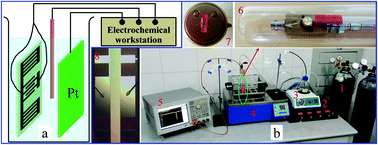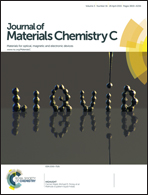Carbon dioxide sensors based on a surface acoustic wave device with a graphene–nickel–l-alanine multilayer film
Abstract
Surface acoustic wave (SAW) sensors containing graphene–nickel (Ni)–L-alanine composite sensing films for carbon dioxide (CO2) detection were investigated. ST-cut quartz SAW resonators were modified with L-alanine, Ni nanoparticles and graphene by electrodeposition. The presence of graphene markedly enhanced the CO2 sensing properties of the sensor. The performance of the sensor containing a graphene–Ni–L-alanine composite film depended both on the pH of the solution used to deposit the L-alanine sensitive layer and operation temperature. The CO2 sensing mechanism of the SAW sensor is based on the adsorption of CO2 and H2O gas molecules by graphene, the catalytic reaction of Ni nanoparticles, and the reaction between L-alanine and CO2 gas molecules; that is, the three materials in the sensitive layer have a synergistic effect. From the analysis of changes in acoustic signals, exposure of the sensor to CO2 not only changed the conductivity of the film but also produced an additional capacitance, which ultimately changed the equivalent capacitance of the sensor.


 Please wait while we load your content...
Please wait while we load your content...